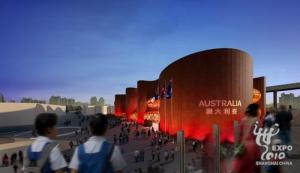The military doctrine of ‘command and control’ heavily influenced the structural approach to management characterised as ‘Scientific Management’ and the works of Taylor (1911). Scientific management assumes, amongst other things, that ‘supervision must be achieved through a clear chain of command and through the application of impersonal rules’ and that ‘only those at the top have the capacity and opportunity to direct the enterprise’. This philosophy has strongly influenced the development of project management (see: The Origins of Modern Project Management). But does this represent effective military management?
Following the defeat of the Prussian armies by Napoleon at the battles of Jena and Auerstedt in 1806, the concept of ridged process-oriented command and control structures has been progressively replaced by the concept of ‘auftragstaktik’, or directive command. These ideas were originally championed by Major General Gerhard von Scharnhorst and were formalised by German Generalfeldmarschall Helmuth von Moltke who was the chief of staff of the Prussian Army for thirty years from 1857.
The core concept of auftragstaktik is ‘bounded initiative’. Provided people within the organisation hierarchy have proper training and the organisational culture is strong, the leader’s role is to clearly outline his/her intentions and rationale. Once this is understood, subordinate personnel can formulate their own plan of action for the tasks they are allocated and design appropriate responses to achieve the objectives based on their understanding of the actual situation, exploit opportunities and mitigate problems.
The investment necessary to achieve this capability is not simply a question of financial and material resources – time is critical both for the training of individuals and the development organisations. In von Moltke’s army, a junior Prussian commander exercising his initiative on the battlefield was most likely drawing upon a variety of resources at his disposal including:
- his understanding of his commander’s explicitly stated directive that would have provided him with an appreciation of the situation, a specific task, and a description of the commander’s intentions;
- his beliefs about his organisation, his role within that organisation, and the degrees of freedom available to him in the exercise of that role;
- his expertise in the technical aspects of the military profession and
- his understanding of his commander and his peers.
These latter aspects are captured in the notion of ‘implicit intent’, would provide him with the basis for his course of action and bound the solution space available to him.
A General may wish to defend a city, a Brigade Commander defend his designated sector and within the sector, a Platoon Commander may be tasked with establishing a road block which involves one of his NCOs establishing a strongpoint. The General does not need to instruct the NCO on how to site the strong point, camouflage it or man it. At each level, good leaders will think ‘two levels up’ and provide oversight ‘one level down’. The process is not random, Standard Operating Procedures (SOP) define how specific tasks should be accomplished and ‘bounded initiative’ allows the individual leader to optimise the SOP for the specific circumstances he or she encounters to best support the overall intent of the commander. Von Moltke emphasised that he wanted to ‘steer’ initiative in the right direction.
These concepts are closely aligned with the human resources approach to management, which developed in the 1950s and 60s and emphasise a symbiotic relationship between individuals and organisations where ‘democratic leadership is the most effective means of managing’ and ‘openness and participation are the most effective means of demonstrating democratic leadership’.
On very small projects, a project manager may be capable of directing and controlling the work of everyone in the team. However, as soon as the team or the technology grows beyond a relatively simple system direct ‘command and control’ becomes impossible and attempting to impose a ridged hierarchy based on formal instructions will lead to inefficiencies. Effective leaders need to establish clear guidelines and a system of protocols, chain of command, and standard operating procedures so that everyone in the project team knows what they to do and who is accountable. The overall action of the team is unified by the leader’s intent; within this space sub-teams and smaller work groups are allocated their individual missions and tasks within that higher intent. Once this framework is in place, properly trained team members can go straight into the performing stage of their activity.
This alternative to ‘command and control’ developed by the Prussian military in the 1860s allows a far more effective and efficient use of resources. Auftragstaktik is not an easy option, the team needs better leadership, better training and the willingness to engage in taking ‘bounded initiatives’ but overall it offers a much better way of achieving the project’s objectives.
Applying these concepts does not reduce the importance of the normal project management artefacts such as the schedule and cost plan; what changes is the way these artefacts are used. In a decentralised management structure, the Project Plan defines the guidelines and framework the team will work within rather than attempting to prescribe how they will work (for more on this see: Project Controls in the C21 – What works / What’s fiction).










